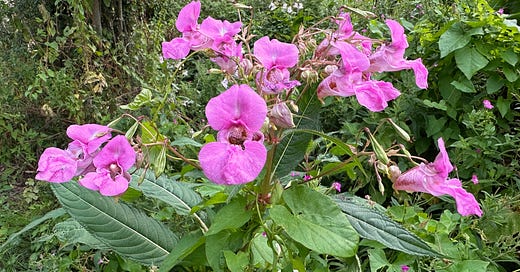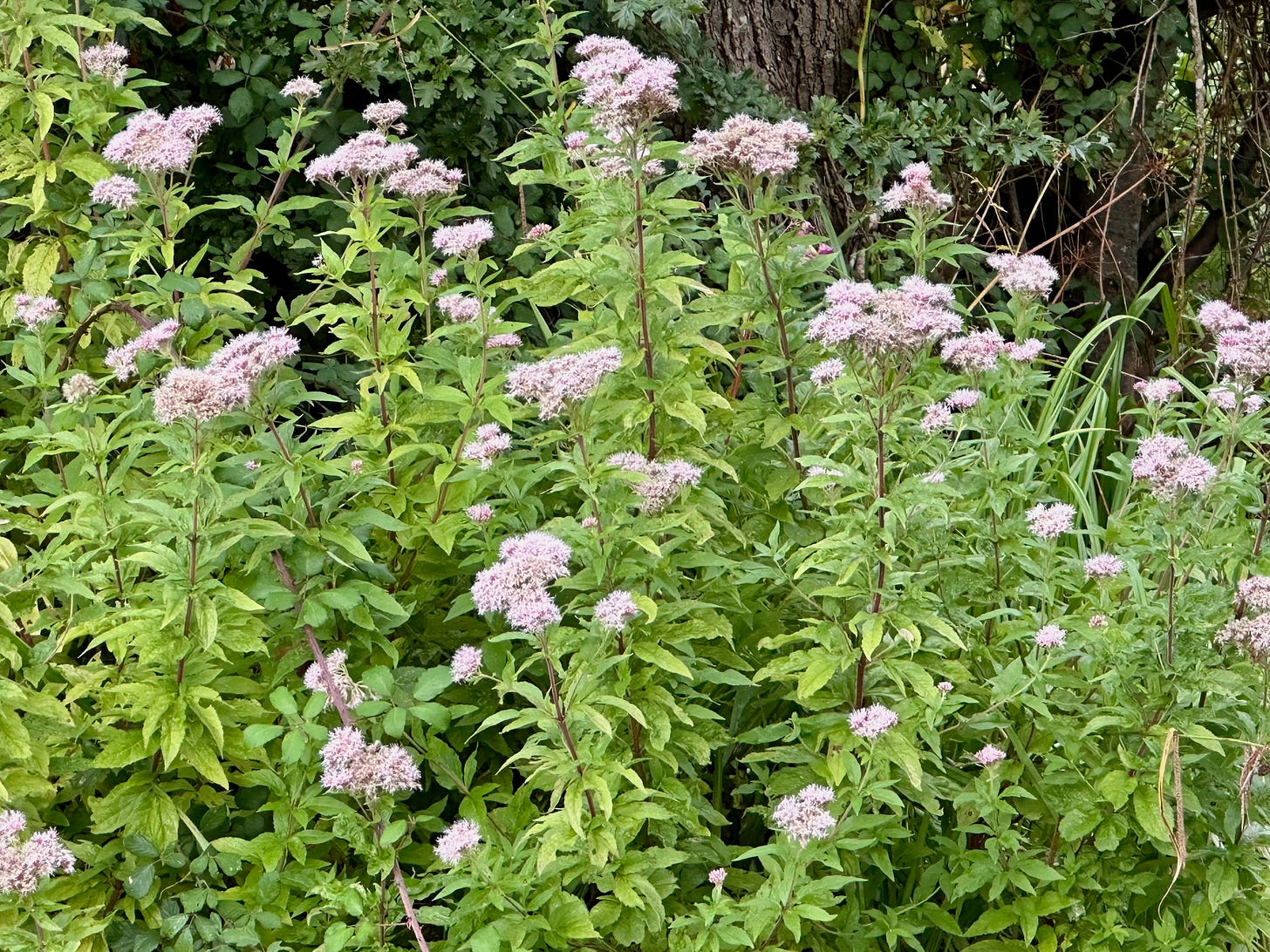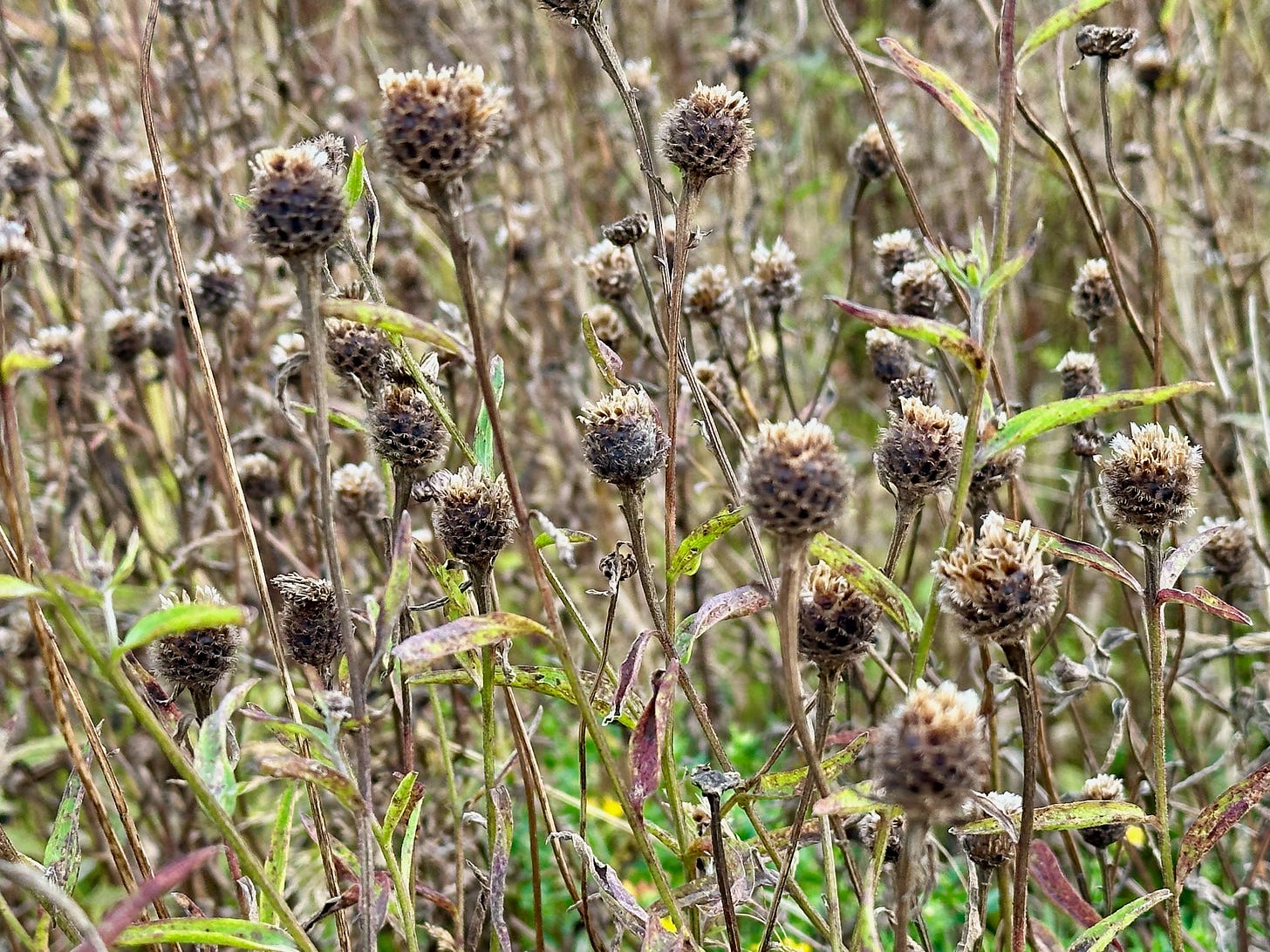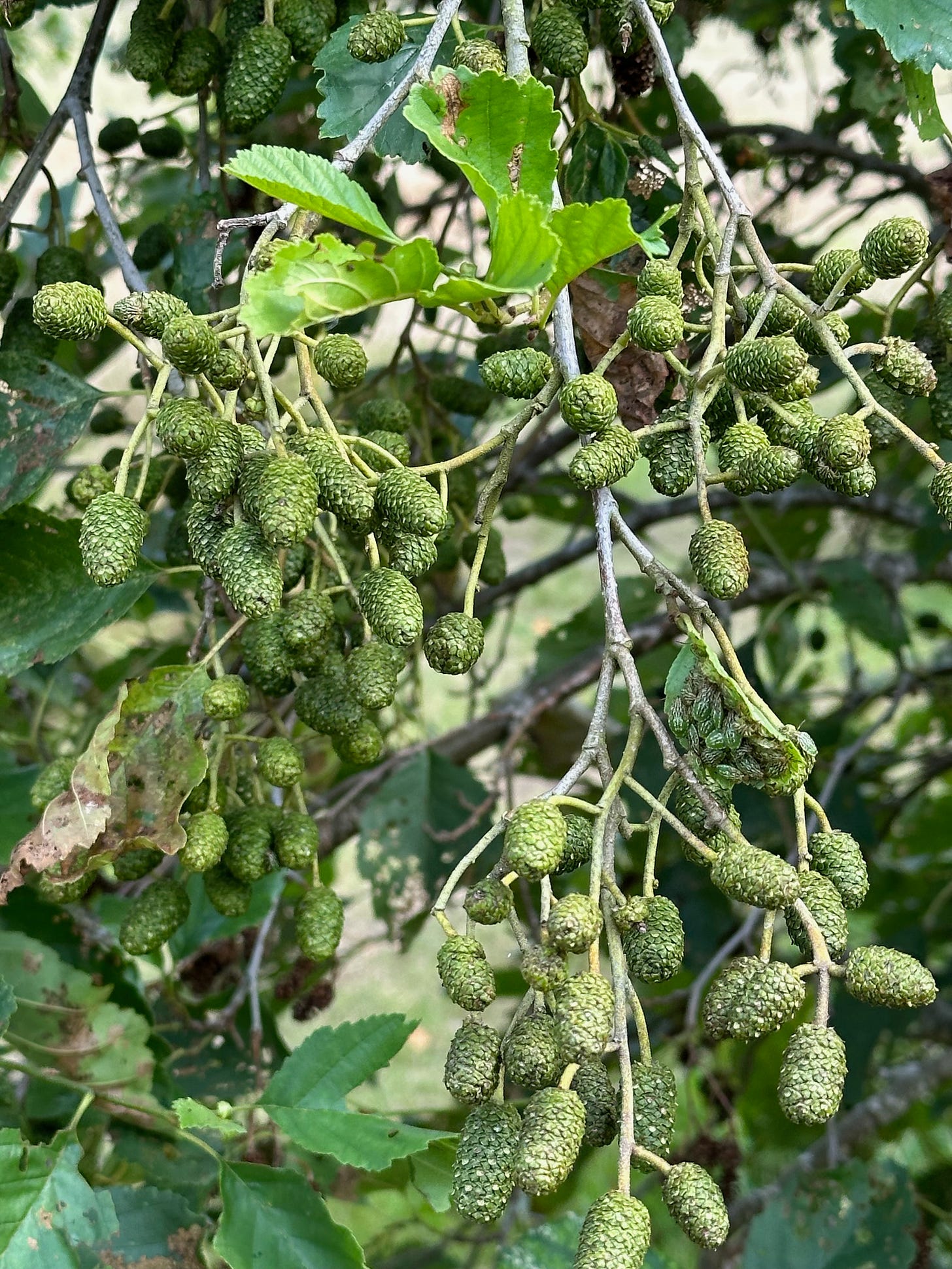I’m still working away on an extended piece about mise en abyme which I will return to next time.1 But this week we’re house- and dog-sitting on the other side of the Downs to Brighton, which is my excuse for this week’s delay in last week’s post!
The weather had been kind. So far, for me anyway, it’s been a pretty good August with plenty of sunshine, light rain at times – often in the evening or at night to freshen up the day’s dryness.
A walk on the wild side
I’m currently listening to Alan Watts’ autobiography In My Own Way and I found his words reflected, not just in my current focus on The Minack Theatre, built in what was originally Rowena Cade’s garden, but also in the colourful summer show of Augustan abundance as I took the dogs for a long walk.
The secret is in the seeker... the ancient search for the paradise garden. Somewhere a courtyard with a fountain, set about with roses and magnolia trees, cypresses and willows, as may be seen in Persian miniatures, and with round arches through which one can look down upon an ocean, fondling jagged eyelets with foam. As in this garden, the point to which I drift like a bee bewitched, is some flower, an iris, a jonquil, a crocus or a morning glory. Indeed, I have sometimes wandered in such paradises with a magnifying glass, to gaze deeply into these translucent coronas of yellow and purple, ivory and coral, with a contemplative devotion, which is surely mystical. As my mother put it once when showing me a morning glory, ‘Doesn't it make you feel jazzy inside?’ Indeed, so many human beings have dreamed of this paradise, that poets and literary people fear to seem trite in trying to evoke this beatific vision of the bee.2
There's a wind, but it's not taking the leaves off the trees yet which are still a variety of dark greens. The harvested summer fields are the colour of straw, but along our path there’s still plenty of green grass, from which plantains rise like a little forest of fir.
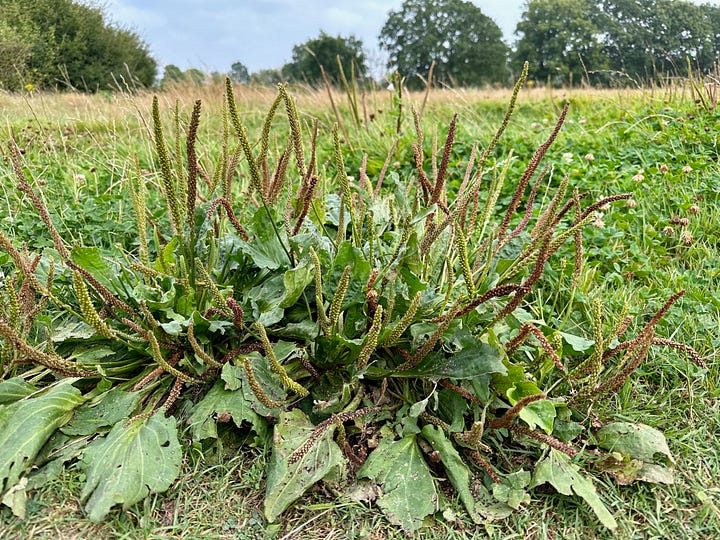
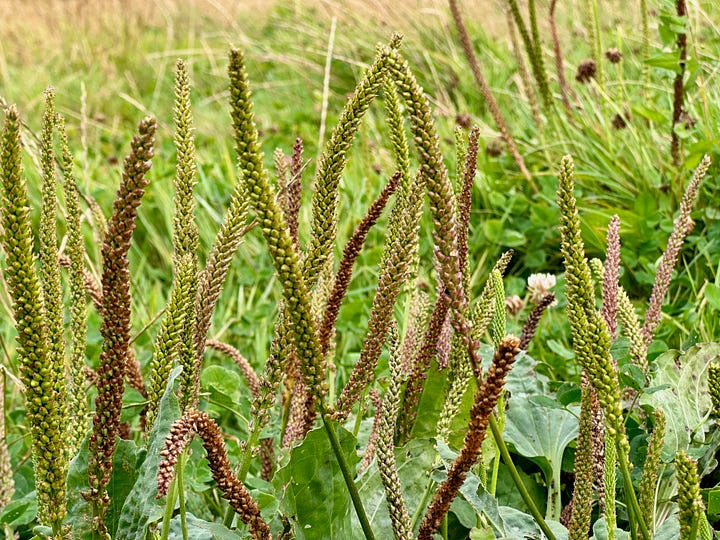
Some of the grasses have an almost ghostly appearance, as if they travel from another dimension to put a shimmering haze of bronze across the ground.
Some of the grasses have the quality of fur on our golden retriever, stroked and swept.
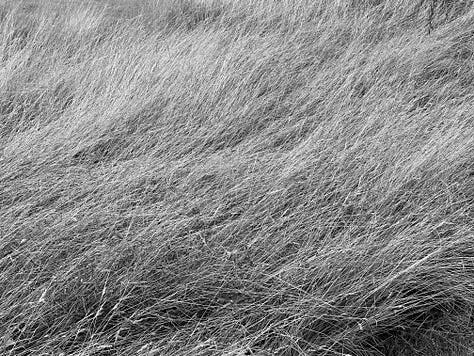
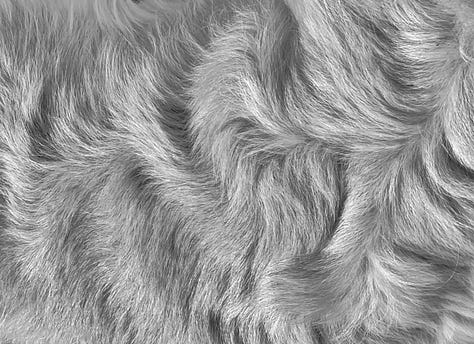
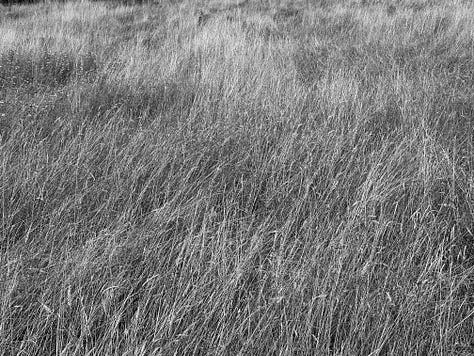
There’s a pleasant freshness in the breeze that pushes against the tall grasses, all their heads nodding in a kind of unison, but randomly, that I interpret as feeling joyful.

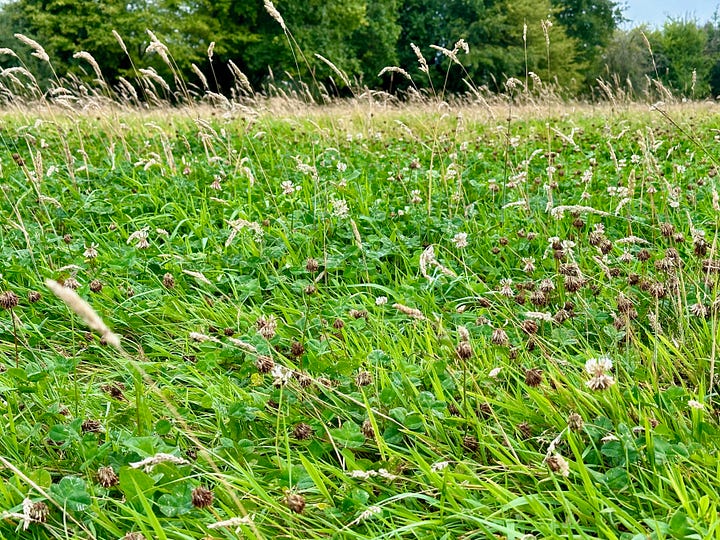
Wild carrot rises here and there. It’s known as bird's nest or bishop's lace. Its flowers gleam like snowflakes, while its seed head has the appearance of an orchid blessed by pomegranate. The flower often has a single, small, dark red floret (known as the ruby) at its centre which is believed to mimic insects, encouraging pollinators.
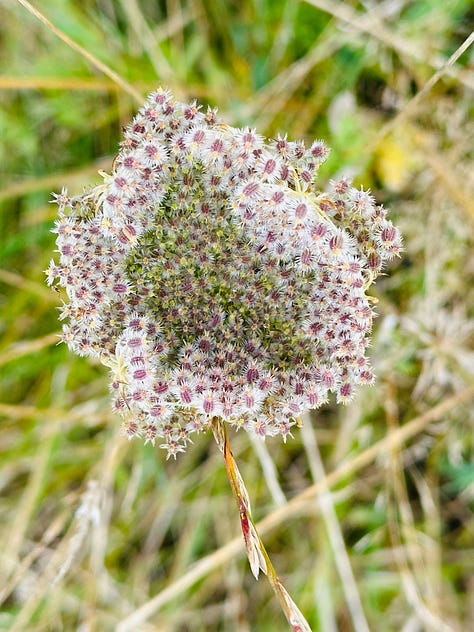
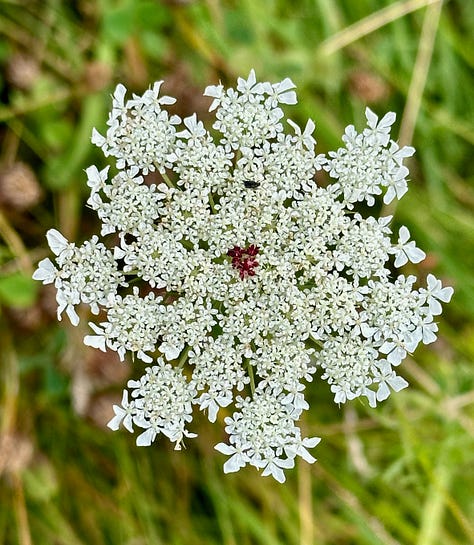
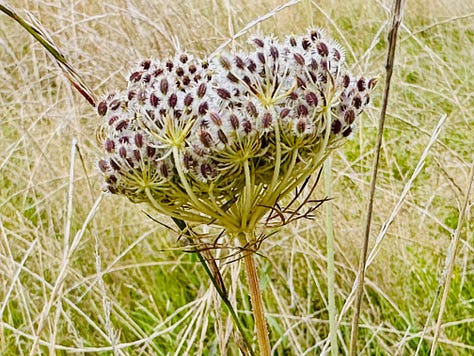
Beech and hazel clutter a long hedgerow, leaves on their long limbs turning their backs to the breeze to forewarn, if the old wives’ tale is to be believed, that rain is on the way. (It certainly was, once the cloud concealed the blue moon after midnight.)
Alan Watts again:
Of course, it follows very simply that the thing I am hoping to find ... is a jewel, whether indestructible as a diamond or emerald, or temporary as a dewdrop or crystal of snow. To pass into this through the eyes, to integrate one's consciousness with its ecstatic centre of energy, and so into the point where all one's nerve currents flow back into the place from which they come, where the individual is the universal in the moment eternity, the ecstasy of the jewel and the flower... a fascination so widely spread there must have some unexplored connection with our whole psychophysical structure, and perhaps with the very design of life.
In a field to the side of our path, two horses are suffering the attention of summer flies, although one at least is hooded. A few days ago, a young buzzard was chilling out in the centre of the field, resisting the mews of a parent. Today, it’s relaxing on the stable roof.
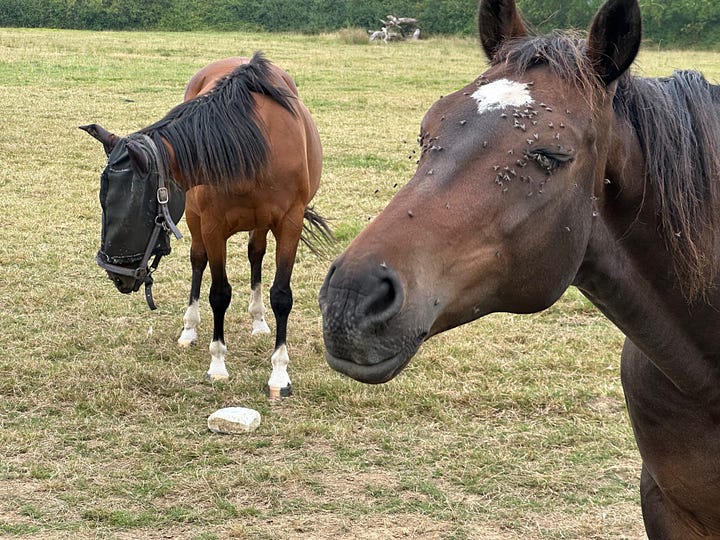
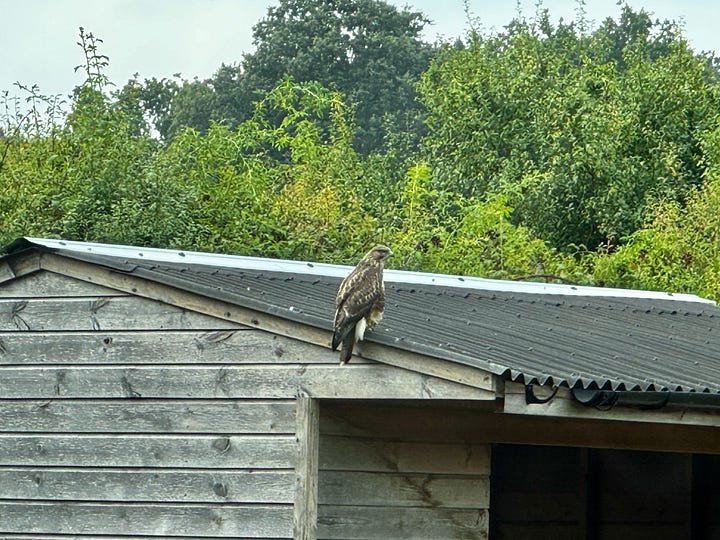
Meanwhile there’s a great gang of crows and jackdaways hanging out with the cattle. The birds swoop up in a clatter of protest as the dogs approach.
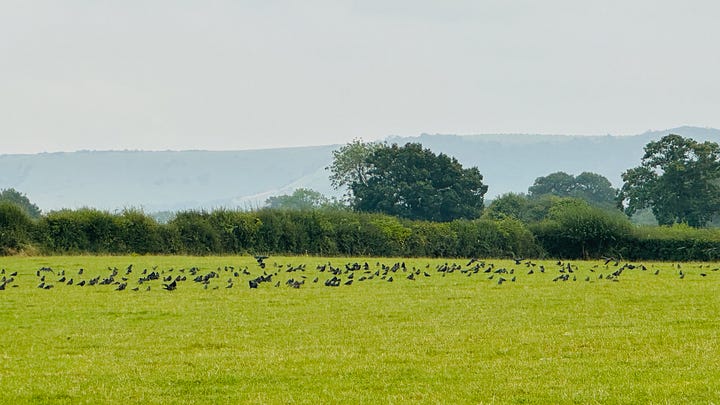
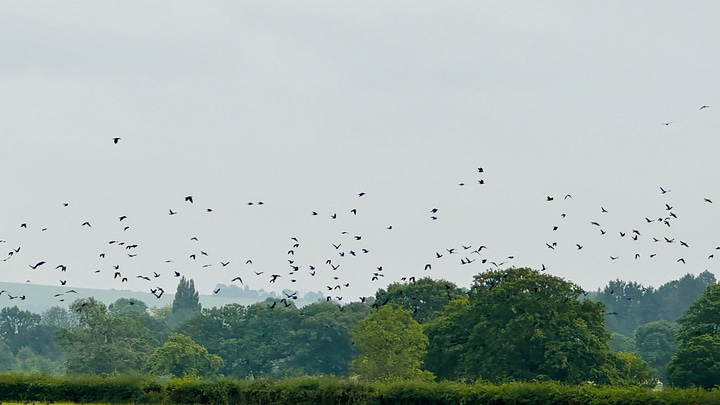
This side, the north side of the South Downs tends to be much wetter than the south side because almost all the streams that run from the Downs drain to the north. Along the stream we follow on our walk, there’s a pink profusion of Himalayan Balsam. It was first planted in the UK in the 1830’s at the same time as giant hogweed and Japanese knotweed3, all promoted as garden plants until their danger as invasive species was understood. Himalayan Balsam now lines many watercourses throughout Britain.
Across the stream lies a fallen Crack Willow, named for its susceptibility to storm damage and the way its twigs break off with an audible crack. But its weakness is also its strength, as a fallen tree can create a grove from root suckers, and broken twigs and branches take root easily, to colonise new territory for the species.
Along the stream there are clumps of Hemp-agrimony, also known as raspberries and cream.
As we walk along a narrow lane of oaks and beeches and out across the fields again, many different flowers decorate our route.
Hairy willowherb is also known as codlins-and-cream (codlins are cooking apples), apple-pie and cherry-pie.
Common fleabane named for its use as an insect deterrent.
Common bird's-foot trefoil also known as eggs and bacon

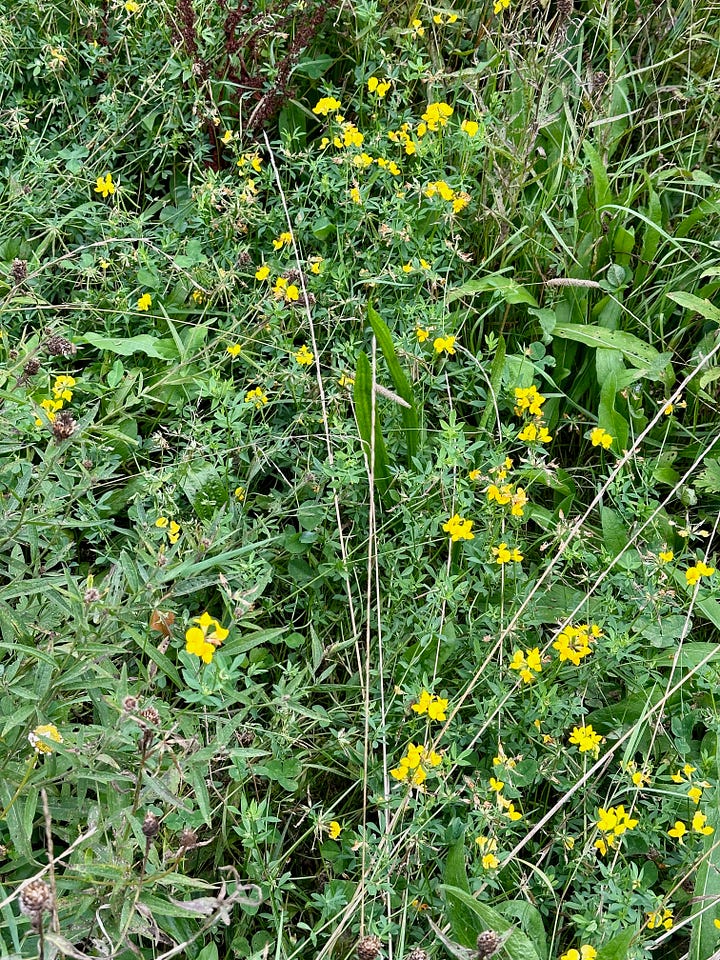
Red clover, now mainly seedheads. (It’s worth following the link to Wikipedia for information about this fascinating plant.)
Purple loosestrife
Meadowsweet
Greater Burdock – a relative of the artichoke, the root of burdock is used as a vegetable in China, Korea and Japan. In Britain, it’s a key ingredient in the drink dandelion and burdock.
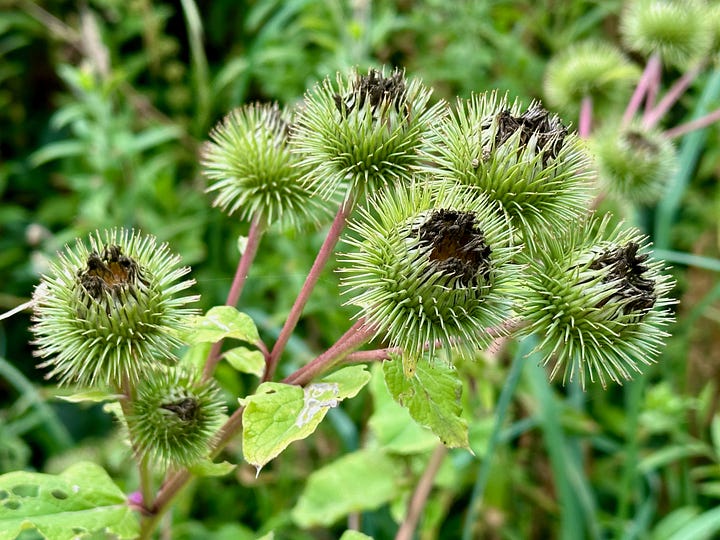
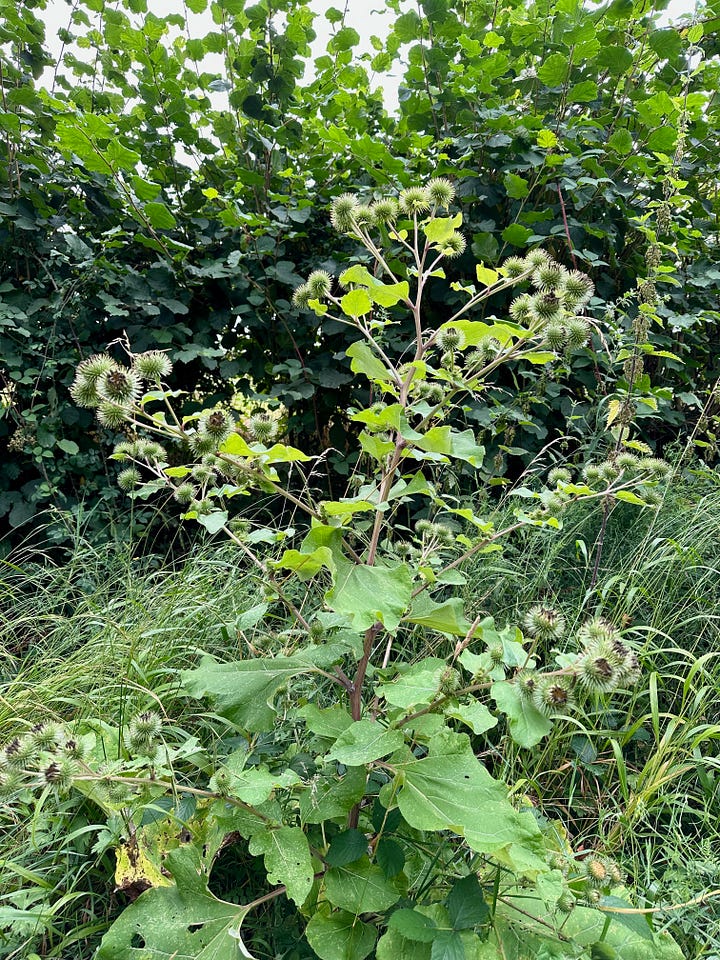
Creeping thistle
Stinging nettle
There’s a really moving film by Dylan Howitt about Brighton textile artist Allan Brown who wove a complete dress from nettles.
Knapweed
According to Wikipedia, a UK study showed the plant to be the top producer of both nectar and pollen combined. The top producer of nectar on its own was ragwort and the top producer of pollen was corn poppy.
We came across a whole field of Ragwort.
Manx poet Josephine Kermode (1852-1937) took the name Cushag, which is the Manx dialect word for ragwort.4
Although many seem to be showing signs of stress, the trees are delivering their summer fruits.
Oaks
Black alder
It’s said the piles supporting the Rialto in Venice are made of alder. And Fender has made electric guitars with alder continuously since 1956.
And a final thought from Alan Watts:
I carry over from childhood the vague but persistent impression of being exposed to hints of an archaic and underground culture whose values were lost to the Protestant religion and the industrial bourgeoisie, indeed, to the modern West in general. This may be nothing but fantasy, but I seem to have been in touch with lingering links to a world, both magical and mystical that was still understood among birds, trees and flowers, and was known just a little to my mother.
Or was it just I who carried in my genes, or in my collective unconscious, the apprehension of whole worlds of experience which official culture repressed or ignored? The discipline arcanum of this culture, so easily mistaken in the child for idle reverie, was that intense contemplative watching of the eternal Now, which is sometimes revived by the use of psychedelic drugs, but which came to me through flowers, jewels, reflected light and glass, and expanses of clear sky.
On finishing reading Gilbert White by Richard Mabey5
As clear as Christmas, I see the catkins she pointed out on our nature walk along the lane behind the school, finch-green with a secret yellow, dusted from the pores and crevices of each tiny lantern-bell. How high they seemed to hang to the children holding hands; how gently bowed their branches to our ground. Each catkin spoke of some direct connection between the tree and the pet, the sound of trees, the purr. So pussy-willow with its fur and little leather cap, its white eye and straight limb, had to be some hybrid in a world the catkins knew, but we could only dream of. Although she knew. She took us there and showed us something in the trees that had no name. Like you, we wait for its returning every spring. Some of us still think it worth a note in an email to a friend. How the frogspawn sparkled in the pond in early March but disappeared by Easter Day. How rarely now the swallows fly above the house, and, whilst a blue tit fires itself from the nesting box on the shed, how the heart aches for a martlet in the eaves, or a nightjar on the evening breeze.
May all your moons be blue! Best wishes from my patch of sky in sunny Sussex, till next time.
We’re hosting grandchildren for four days next weekend, so the next Patch of Sky will be passing by around September 1st.
All Alan Watts’ quotations from In My Own Way, Alan Watts, MacMillan Audio, 2019
My poem Invasive Species from Jizz - New and Selected Poems, (Kingston University Press, 2017), published in North America as Nest (Red Hen Press, 2017)
Invasive species Come the summer we’d gather sticks and chains to thrash the knotweed, exported from Japan to the field and copse behind our house, all that remained of an ancient Domesday woodland. Its hollow stems reminded me of torture stories from the Second World War, of how a man would be immobilised above sharpened bamboo shoots. The plants would burst in and through the body. Using canes for bows my hand would often slip along a split. How the bamboo cut, how the cuts would sting. Inside each cane some white pulp like the stuff inside the pods of runner beans. And, I imagined from my comics, inside the heads of people too, bursting when the bombers came.
TO THE CUSHAG’S FRIEND O The cushag flower in a fairy bower Would shine like a star of gold; But when it grows in the farmer’s close ‘Tis a shocking weed, we’re told. Yet common things May have their wings To help our souls above; And wayside weeds, Like kindly deeds, Spring from a father’s love. ……………………………………………. Now the cushag we know must never grow Where the farmer’s work is done; But along the rills in the heart of the hills The cushag may shine like the sun, Where the golden flowers Have fairy powers To gladden our hearts with their grace; And in Vannin Veg Veen, In the valleys green, The cushags have still a place.
You can read the whole poem and more by Cushag at https://manxliterature.com/browse-by-author/cushag/
Also from my New & Selected - Jizz - New and Selected Poems, (Kingston University Press, 2017), published in North America as Nest (Red Hen Press, 2017)


